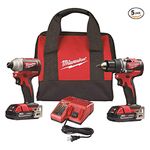Make Room Behind Trim
A series of stainless-steel screws on the back side of a fascia board creates a space that promotes drying after a rain.

I have replaced several fascia boards on decks and porches. On a few occasions, after removing the old fascia boards, I discovered rotted wood on the joists behind it that had to be replaced. So now, whenever I install new fascia, I put a series of stainless-steel screws on the back side along the entire length of the new boards.
This creates a gap so that both the fascia and the framing lumber can dry out after a rain. On a recent covered porch, I used ½-in., #10 pan-head screws, which created a slight space between the fascia board and the frame. On open decks located under trees, you may want to use screws with thicker heads that will leave a larger gap that won’t clog with falling seeds and leaves.
You can also install the screws on the framing lumber. But always install the screws so that they are in close proximity to the fasteners you use to secure the boards, otherwise you will end up with wavy fascia.
— Nick Fera; Brielle, N.J.
RELATED STORIES
- Project: Site-Built Under-Deck Drainage System
- Controlling Moisture in Deck Lumber
- Adding Deck Fascia
Got a Tip?
Do you have any great tips like this one on how to create space behind fascia boards for quick drying? Share your methods, tricks, and jigs with other readers. Tag them @FineHomebuilding on social, email them to us at tips@finehomebuilding.com, or upload them to FineHomebuilding.com/reader-tips. We’ll pay for any we publish.
Fine Homebuilding Recommended Products
Fine Homebuilding receives a commission for items purchased through links on this site, including Amazon Associates and other affiliate advertising programs.

Drill Driver/Impact Driver

FastenMaster Screw Bolt Fastening System

MicroFoam Nitrile Coated Work Gloves






























View Comments
That’s a good idea. My coworker and I always call a situation like that where moisture gets trapped and has a hard time drying out a rot gap.